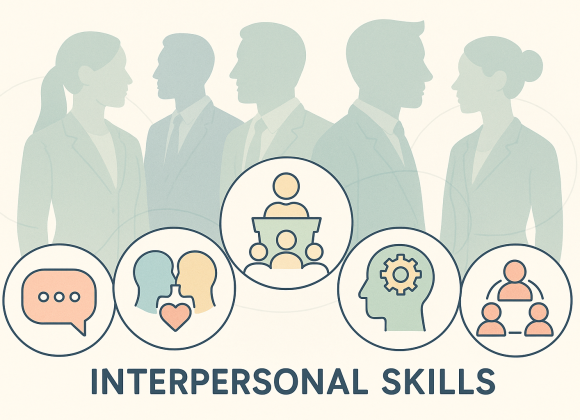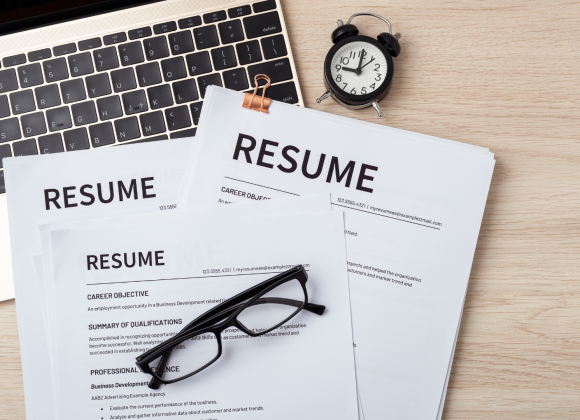In today’s competitive job market, securing an interview is just the beginning. The real challenge lies in making a memorable and positive impression that positions you as the ideal candidate. Whether you’re a recent graduate or a seasoned professional, your ability to present yourself confidently and professionally during an interview can significantly influence the outcome.
This guide outlines key strategies to help you leave a lasting impression in any interview setting—virtual or in-person.
1. Research the Company and Role
Before entering the interview room, it’s imperative to understand the company’s values, mission, and recent developments.
Action Steps:
- Study the company’s website, social media presence, and recent news coverage.
- Analyze the job description and map your skills to its key requirements.
- Familiarize yourself with the interview panel, if known, through LinkedIn.
Why it matters: It demonstrates preparedness, genuine interest, and alignment with the organization’s goals.
2. Practice Your Responses
Preparation improves clarity and confidence.
How to prepare:
- Review common interview questions.
- Practice aloud in front of a mirror or with a friend.
- Record yourself to evaluate your tone and body language.
Examples to rehearse:
- “Tell me about yourself.”
- “What are your strengths and weaknesses?”
- “Describe a time you resolved a conflict.”
Note: Practice should enhance confidence, not make you sound robotic. Stay flexible and authentic.
3. Dress Professionally and Appropriately

Your attire reflects your awareness of the company culture and your attention to detail.
Tips:
- Choose business-formal or business-casual attire based on the industry norms.
- Ensure cleanliness, grooming, and a neat appearance.
- For virtual interviews, maintain professional attire and a clean background.
Pro Tip: When unsure, it’s better to be slightly overdressed than too casual.
4. Arrive Early and Be Prepared

Punctuality sets a tone of responsibility and respect for others’ time.
Preparation Checklist:
- Arrive at least 10–15 minutes early for in-person interviews.
- For virtual interviews, test your internet, audio, and video setup in advance.
- Carry multiple copies of your resume and a notebook for notes.
5. Start with a Confident Introduction

First impressions are formed within seconds.
Practice this:
- Greet your interviewer with a firm handshake and a polite smile.
- Introduce yourself clearly with your full name and a brief professional summary.
- Maintain eye contact and use open body language.
Sample Introduction:
“Good morning. I’m Priya Sharma, a software engineer with three years of experience in full-stack development and a strong focus on scalable web applications.”
6. Use the STAR Method to Answer Questions
To respond effectively to behavioral questions, use the STAR format:
- Situation: Briefly describe the context.
- Task: Explain your responsibility.
- Action: Highlight the steps you took.
- Result: Share the outcome with measurable results.
Example:
“When leading a marketing campaign at XYZ Ltd, I noticed low engagement. I implemented A/B testing, optimized content timing, and saw a 45% increase in click-through rates.”
7. Demonstrate Relevant Skills and Achievements
Your resume got you the interview—your examples will win the job.
How to do it:
- Reference specific achievements and quantify them when possible.
- Align your experiences with the job description.
- Highlight problem-solving, teamwork, or leadership moments.
8. Ask Insightful Questions
When invited to ask questions, use this as an opportunity to show deeper interest.
Examples of smart questions:
- How is success measured in this role?
- What are the team’s biggest challenges currently?
- What growth opportunities does the company offer?
Avoid: Basic questions that can be answered through a Google search.
9. Follow Up with a Thank-You Email
A professional follow-up reinforces your interest and courtesy.
What to include:
- A thank-you for the opportunity.
- A mention of a specific topic discussed during the interview.
- A brief reiteration of your interest and qualifications.
Send it within 24 hours. Keep it concise and professional.
Common Mistakes to Avoid
- Rambling: Keep answers focused and concise.
- Speaking negatively about past employers: Stay professional.
- Not asking questions: It signals disinterest.
- Ignoring body language: Fidgeting or poor posture can hurt your image.
- Over-rehearsed responses: Be authentic, not robotic.
Final Thoughts
Making a great impression in an interview is about more than just dressing well or rehearsing answers. It’s about authenticity, preparation, and professional presentation. By understanding the employer’s needs, communicating clearly, and following up appropriately, you can distinguish yourself from other candidates and increase your chances of receiving a job offer.
Remember: Every interaction during the interview—from the handshake to the thank-you email—is a reflection of your personal brand. Make it count.
Frequently Asked Questions (FAQs)
Q1: How long should I talk when answering a question?
Answer: Ideally, keep your response between 1–2 minutes. Use the STAR method for clarity.
Q2: Is it okay to bring notes to the interview?
Answer: You can bring a small notebook with key points or questions, but avoid reading directly from it.
Q3: How should I prepare for a virtual interview?
Answer: Ensure a quiet environment, test your internet connection, and maintain eye contact by looking into the camera.
Q4: Should I follow up if I don’t hear back?
Answer: Yes, it’s appropriate to follow up after 5–7 business days with a polite email expressing continued interest.
Q5: What if I don’t know the answer to a question?
Answer: Stay calm. Be honest, and if possible, explain how you would go about finding a solution.





